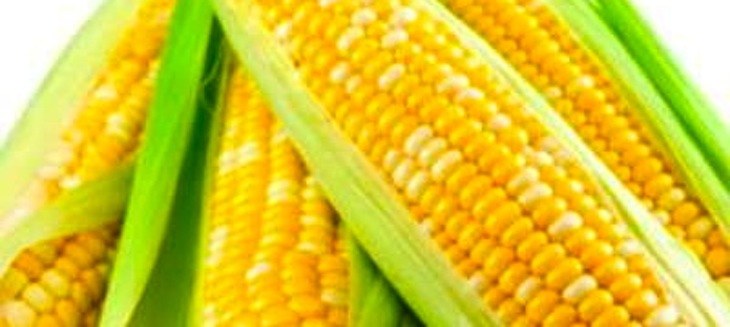Corn prices dip as harvest season unfolds for the first row crop in the state
by September 7, 2021 3:44 pm 1,166 views

The corn harvest is underway in Arkansas as commodity prices in the sector have slightly dipped.
As of late August, at least 9% of the state’s approximately 690,000 acres of corn had been harvested, according to the U.S. Department of Agriculture’s National Agricultural Statistics Service, placing growers in line with the five-year average. The remnants of Hurricane Ida was expected to possibly impact the corn harvest, but the storm system largely missed the Arkansas Delta region.
Jason Kelley, extension wheat and feed grains agronomist for the University of Arkansas System Division of Agriculture, said that most of what had been harvested thus far in Arkansas was in the southern half of the state, and mostly by growers with access to grain dryers.
“Most corn producers haven’t started their harvest yet,” he said. “But the corn that has been harvested is yielding good, according to early reports.”
Kelley said that more harvest efforts should begin soon, as grain moisture continues to fall and producers can transport and store the grain without the need for grain dryers.
Record rain and flooding during the first two weeks of June impacted about 30,000 acres of corn, resulting in a loss of about $60 million in revenue, according to estimates from the Division of Agriculture. While many of those acres were likely replanted with soybeans, the late date of the flooding relative to the growing season made replanting in corn economically unfeasible for most growers.
Kelley said that as harvest efforts gain speed, growers are watching weather forecasts with crossed fingers. In late August 2020, winds and rain from Hurricane Laura pushed northward from the Gulf of Mexico, triggering Arkansas’ first tropical storm warning from the National Weather Service in history. While Arkansas growers escaped the worst of the storm’s damage, they were then bogged down by several days of rain, causing most harvest efforts to grind to a halt and caused considerable lodging and harvest issues.
Both cash and booked corn prices fell gradually over the preceding week, with cash prices ending Aug. 20 at $5.39 a bushel, and booking prices ending at $5.55 a bushel. Robert Stark, agricultural economist for the Division of Agriculture, said a decline in cash prices is normal as harvest begins.
“The current year crop supply becomes more certain as the crop gets closer to harvest,” Stark said. “This results in less speculative buying demand and price tends to fall.
“Some buyers estimate that they have enough stocks on hand to last them to harvest when price would be lower,” he said. “These buyers drop out of the market temporarily, resulting in reduced demand.”
Stark said producers who have any remaining stock from the previous year’s harvest will generally want to sell it off as well to make room to store the current harvest as necessary.
Additionally, despite the increase in on-farm storage that Arkansas growers have accumulated over the last decade, commercial storage elevators and other processing facilities remain in high demand, Stark said.
“Producers may also need to convert their new crop stocks into cash for repayment of outstanding operating loans taken out prior to planting,” he said. “Each day that the loan balance remains unpaid results in additional accrued interest costs on top of the loan principal repayment amount.”
Corn acres in Arkansas ballooned this year from about 620,000 in 2020 to 750,000 acres, spurred by hopes of elevated market prices as the global economy begins to move beyond the COVID-19 pandemic and fuel and animal feed consumption increases. Storm damage has dropped the number of acres that will actually be harvested.
Nationally, corn acreage increased only slightly, from about 90.9 million acres to about 92.7 million acres. The corn crop has an estimated $61 billion impact on the U.S. economy.
